Finding the correct camera for an ITS can be an overwhelming process, but integrators and OEMs can successfully choose the right camera by using the guidelines detailed in this article.
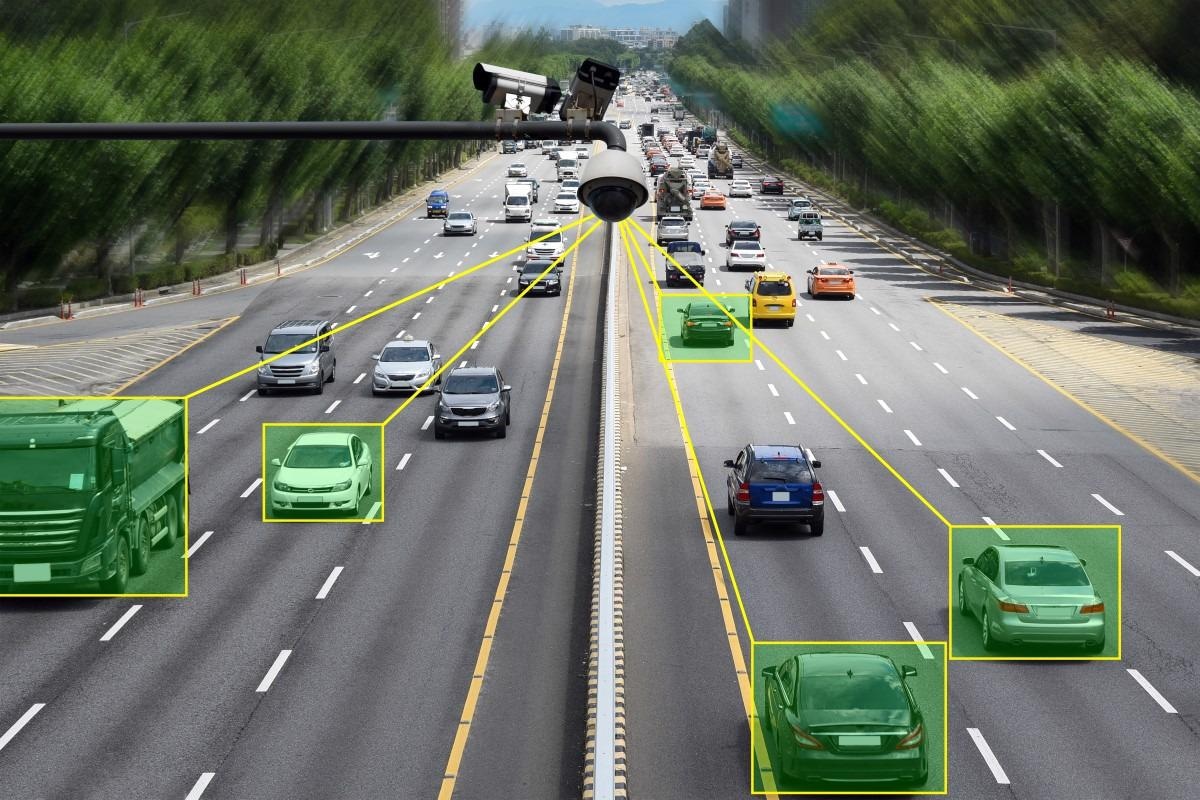
Image Credit: FLIR Systems
Intelligent transportation systems (ITSs) enhance transportation safety and mobility, improve productivity, enforce laws and, in the long run, help generate revenue.
However, failure to take harsh environments and specific application needs into account when choosing cameras for an ITS will limit system success. Additionally, the sheer number of options makes it difficult to know where to start.
Cameras are used prominently in ITS technology in applications such as traffic monitoring, high-occupancy-vehicle (HOV) lane monitoring, automatic license plate recognition (ALPR; referred to as automatic number-plate recognition, or ANPR, in the UK), access control, speed enforcement, parking enforcement and asset protection.
Depending on the application, various camera types and systems may be necessary. All options present challenges, whether the camera setup requires long cable runs and the capacity to weather harsh environments or demands embedded systems with edge processing capabilities for rapid feedback.
Paying close attention to each of these factors can guarantee system success, lower cost of ownership and future-proof operations. This article highlights common challenges and methods to overcome them and help position ITSs for success.
Start with Image Quality
When conducting the relevant research for cameras for ITS applications, all planning must start with image quality. In the case of ANPR/ALPR applications, the system has two primary tasks: determining that a number /license plate is in the camera’s field of view and then decoding the plate.
Both tasks are prone to error. To ensure the success of ANPR/ALPR systems, they require high-quality images for the software to conduct optical character recognition (OCR) and optical character verification (OCV) tasks. Therefore, system designers and integrators require powerful cameras.
Cameras with low-quality image sensors will not generate high-resolution images, so the image sensor must be considered a key factor.
ITS scenes may greatly vary in brightness due to changes in outdoor lighting conditions, and a camera must capture and provide data and details to the brightest and darkest parts of an image and any deviations in between irrespective of lighting conditions.
The measurement of a camera’s capacity to perceive higher and maximum and minimum light intensities is known as the “dynamic range”; the higher the decibels (dB), the better.
High-quality image sensors, such as Sony’s Pregius and Pregius S line of global shutter CMOS image sensors, offer high dynamic range sensitivity, making them the perfect choice for a wide range of ITS applications.
Teledyne FLIR’s Blackfly S camera family offers an outstanding range of camera models based on Sony Pregius and Pregius S image sensors. Ranging from 1.6 MPixel to 26 MPixel, they are suitable for a vast array of different ITS tasks.
For example, the BFS-PGE-161S7C-C (color)and BFS-PGE-161S7M-C (monochrome) cameras incorporate the 16.1 MPixel Sony IMX542 Pregius S sensor delivering 9609 e- saturation capacity, 70.46 dB dynamic range and quantum efficiency measurements of 45.76% at 470 nm (blue), 52.26% at 525 nm (green) and 33.49% at 630 nm (red).
While taking on a high-resolution camera when it is not necessary for the application adds cost to the total project, it makes sense if considering future scenarios. Integrators and OEMs, for instance, can future-proof operations to facilitate road expansion and prevent having to replace lower-resolution cameras later.
Capturing Color, Overcoming Glare
Color is another key quality metric. In the case of ANPR/ALPR, while black-and-white images display the number/license plate, color images add context to what is happening in a given situation (traffic lights, color-coded road signs and so forth).
Color is also key in situations where vehicle-mounted cameras check for improperly parked cars. For instance, in Spain, blue lines on the street signify that a driver must pay for the parking spot, while green lines show that the spot is reserved for someone who resides in the neighborhood.
Embedded vision systems can check for infractions automatically but require high-quality color reproduction to do so.
Image sensors have a specific response to lighting (quantum efficiency), and each lighting condition, such as sunlight, has its own emission spectrum, influencing how an image will look when captured.
Quantum efficiency establishes the capacity of an image sensor to convert photons into electrons and can vary depending on the wavelength. Color collection tools take into account how each color channel interacts with the others and scale each color channel independently.
A color corrective matrix measures and compensates for these interactions for more precise reproduction of the real-world colors of a given subject. This is of particular importance in applications where minor differences in color can negatively influence the accuracy and reliability of the results.
There are times when cameras and vision systems may struggle when dealing with glare and reflections on reflective surfaces such as glass. For instance, if an ITSs needs to acquire an image inside a car for HOV lane monitoring, reflections and glare from the sun may impede the camera’s ability to capture images of the car’s interior.
Teledyne FLIR provides two cameras (one GigE, one USB) based on the 5 MPixel Sony IMX250MZR monochrome polarization sensor and one camera (USB3) based on the 5 MPixel Sony IMX250MYR RGB polarization sensor.
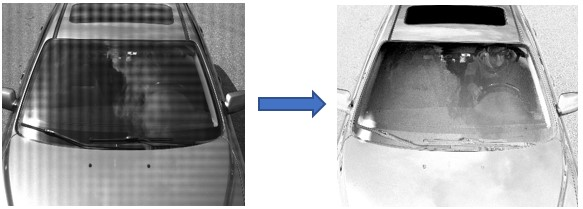
Figure 2. Polarization cameras can capture images of the car’s interior even in difficult scenarios where glare or reflections may be present. Image Credit: FLIR Systems
Find a Hardware Expert
A number of integrators and OEMs in the ITS industry may possess more software expertise than hardware. Choosing, testing and optimizing hardware does present a challenge, but a camera vendor with the appropriate experience can offer technical consultation on the project and support the selection and setting up of the cameras.
The vendor should also supply referrals to trusted partners when dealing with accessories and services the company does not offer, including lenses, cabling, housing and software development.
OEMs and integrators also require support throughout the various stages design and development process and assistance with system setup and software advice. Integrators should search for camera companies that offer these services through a combination of system engineers and support teams with frequent check-in calls.
Before choosing a hardware provider, end-users should also inquire about system support and how the provider handles customer relations.
Striking a Balance: SWaP-C and Performance
This well-known term in research and development circles as well as military applications, SWaP-C stands for “size, weight, power and cost.” Applications of all varieties require devices, systems and programs with optimal SWaP-C.
In no way are ITS applications different. In recent years, board-level, low-cost ITS cameras have seen an increase in popularity. However, cameras in smaller packages aren’t sufficient on their alone; cameras must strike a good balance between SWaP-C and performance.
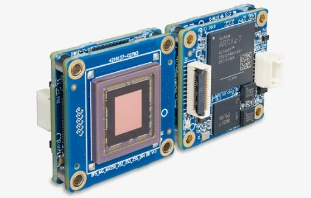
Figure 3. Despite the compact design, Teledyne FLIR board-level cameras offer the same feature sets as their cased counterparts. Image Credit: FLIR Systems
One way Teledyne FLIR is able to balance this is by ensuring that all its board-level cameras possess identical feature sets that match the cased versions of the camera.
One trend in ITS involves employing higher-resolution cameras to span multiple lanes on a highway. In previous times, integrators that deployed board-level cameras with low-resolution image sensors may wish to upgrade a 1.3 MPixel camera with an 8.9 MPixel or 12 MPixel camera.
Suppose the form factor of the new camera does meet the same specs as the previous model. In that case, the integrator will need to redesign and recertify it. Teledyne FLIR offers board-level cameras with the equivalent form factor — across a range of resolutions — so integrators can upgrade systems more easily.
A Shift Toward Embedded
As with the machine vision market, ITS has shifted toward embedded systems with edge computing capacities in a low-power, small form factor design. The first application that may come to mind when considering embedded systems in ITS is in-vehicle deployment, but embedded systems are suitable for almost any ITS or smart city application.
Integrators should assess some of the most popular embedded hardware options for a possible fit. For instance, integrators should check that the camera works with NVIDIA’s Jetson TX2 or Xavier embedded modules. A number of ITS applications involve advanced algorithms and require a system that possesses the capacity to process them.
As such, Teledyne FLIR launched the Quartet™ Carrier Board for TX2. Designed specifically for custom ITS applications, it enables customers to connect four board-level USB3 cameras directly to the TX2 without needing hubs or converters.
Each connector in the power-over-cable board has its own bus, so it eliminates the need to share bandwidth with other connections. As an example, with the Quartet, integrators can install a high-resolution color camera for overall context, a polarized camera to see through windshields and a monochrome camera for ANPR/ALPR - all in a single connected system.
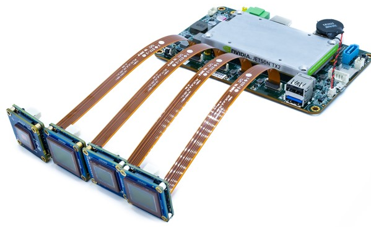
Figure 4. Designed for the Jetson TX2, the Quartet Carrier Board can connect to four cameras in space-constrained applications. Image Credit: FLIR Systems
Rugged, Reliable Design
Cameras used for ITS applications must have the capacity to handle the task from a physical standpoint. For instance, during on-vehicle applications, integrators must take into account the camera’s ability to function in extreme temperatures.
While many cameras are installed within a protective housing to endure the weather, cameras still need to function in hot temperatures (exceeding 50 degrees Celsius); Teledyne FLIR guarantees that all of its camera models have gone through successful HALT testing (Highly Accelerated Life Testing), making sure that no camera failures occur from -30 ? to 80 ?
Other factors to consider when choosing a camera are shock and vibration. Cameras must comply with industry specifications for shock and vibration to retain image quality and ensure long-term system reliability.
When purchasing a camera, users should look into what type of testing it has undergone. Vibration testing done on Teledyne FLIR cameras is publicly documented.
Generally, ITS cameras must be extremely reliable and free from malfunction. Borrowing a platitude from the sports world, “the best ability is availability.” Cameras must be able to perform the required tasks for a sustained period of time without breaking and needing to be replaced.
All ITS integrators know the cost and challenges involved when switching cameras in a system already in place. Integrators can circumvent the embarrassment and inconvenience by choosing high-quality cameras proven to perform in an ITS environment for a number of years.
Leveraging Time Stamps and GPS Data
GigE Vision cameras are favored in ITS applications for numerous reasons, including their capacity to support exceptionally long cable lengths. Another, perhaps unknown, reason is their ability to support the IEEE 1588 precision time protocol (PTP).
Cameras supporting IEEE 1588 PTP time-stamp images precisely at the point of exposure. Furthermore, the standard offers advanced capabilities, such as enabling multiple cameras to execute synchronized image acquisition predicated on an internal time-based command, without needing to externally trigger devices.
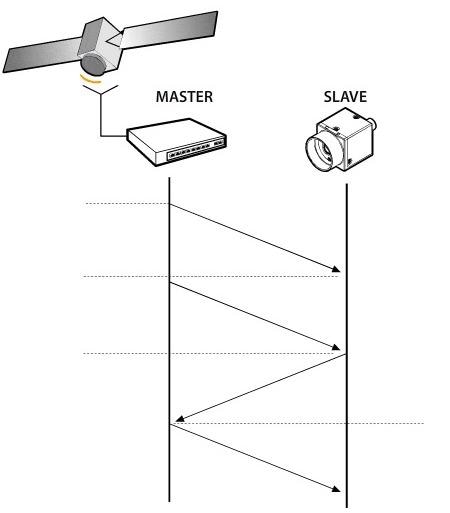
Figure 5. Path delay is calculated and factored into synchronizing the clocks between devices. The primary sends two signals to the slave (1) and (2). The secondary then sends a signal back (3) and path delay is calculated and applied to sync the clocks (4). Image Credit: FLIR Systems
This standard is important as it can synchronize to external hardware and embed GPS data in image streams. An example of this is accurate detection of vehicles in violation of the speed limit (without radar).
Time stamps from two different points can help establish whether a vehicle surpassed the speed limit, and accurate image times from both points will also help to streamline high-precision speed analysis.
Time stamps are also crucial for gantry-based automatic toll enforcement. An incorrect time stamp will not generate an image of the entire car; the time stamp must be in sync for toll enforcement. When it comes to system design, the need for time-stamping prior to purchase must be considered.
Achieving System Success
Ultimately, numerous cameras available on the market today will fail and present problems — not to mention lost time, money, reputation and public trust.
When assessing cameras, always take into consideration image quality, hardware flexibility, embedded capabilities, physical design, reliability and the value of time stamps and GPS data. By taking all of these factors into account, integrators will be well-prepared for overall system success.
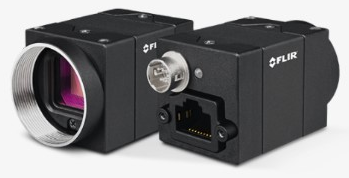
Figure 6. Cameras such as Teledyne FLIR's Blackfly S leverage the latest CMOS image sensor technology from Sony's Pregius and Pregius S line. Image Credit: FLIR Systems
Teledyne FLIR supplies a range of robust, compact industrial cameras that can be reliably deployed into many ITS projects and cover low-resolution (1.3 MPixel) needs all the way up to high-resolution (20 MPixel-plus) needs for multilane coverage.
Contact Teledyne FLIR today to learn how to upgrade current ITS applications using cameras from Teledyne FLIR — whether off-the-shelf or customized to the integrators specific needs.
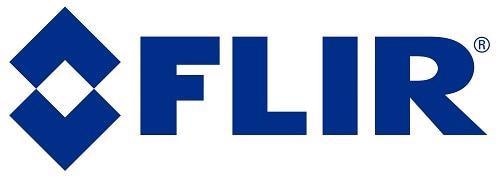
This information has been sourced, reviewed and adapted from materials provided by FLIR Systems.
For more information on this source, please visit FLIR Systems.